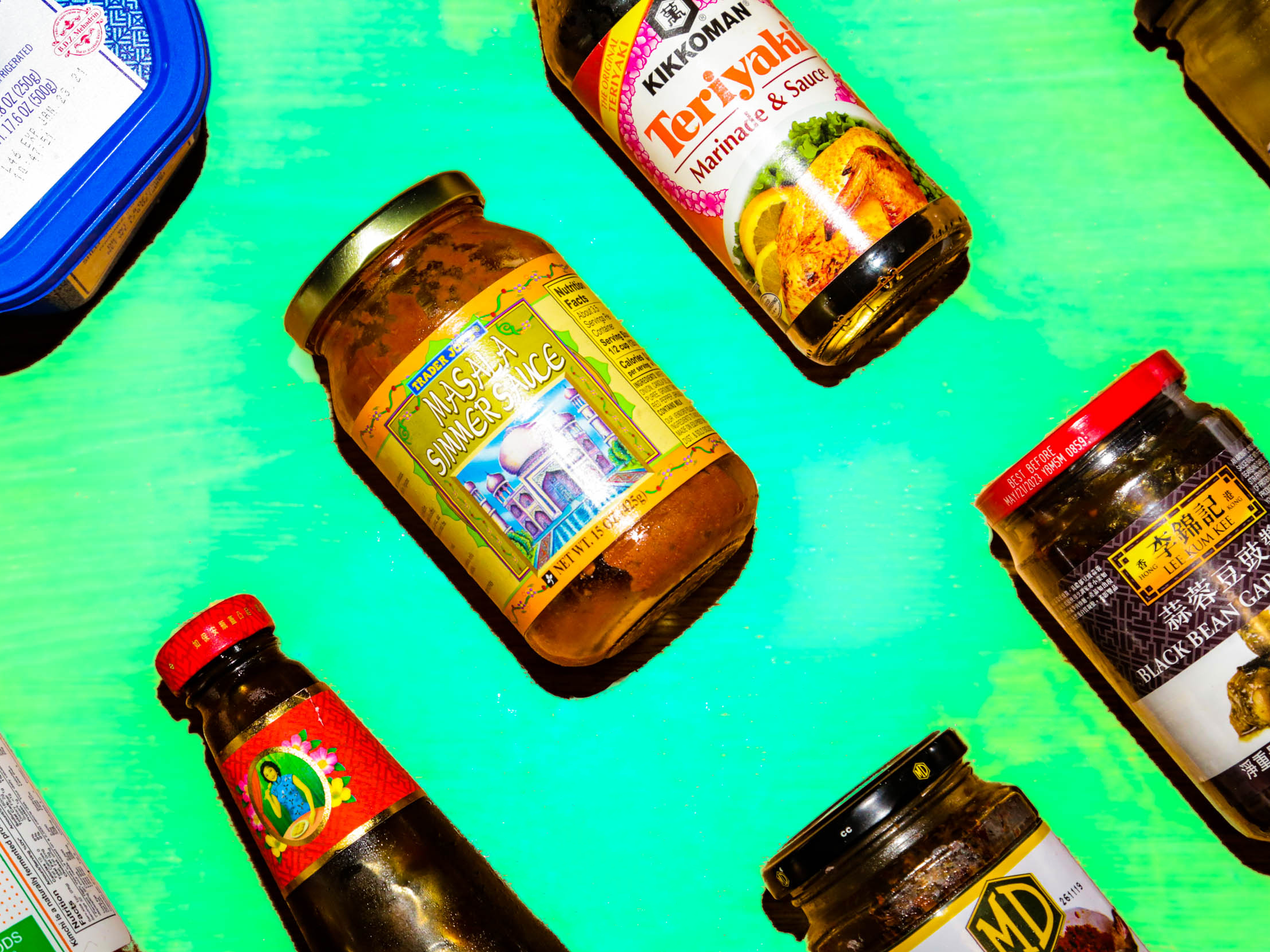Millennials are killing the 'ethnic aisle' — and insiders and experts say that's a good thing
by Irene Jiang
Irene Jiang/Business Insider
- “Ethnic” is a word and a grocery category that’s becoming increasingly outdated as Americans’ tastes shift.
- Krishnendu Ray, an associate professor and head of the Nutrition and Food Studies department at New York University, told Business Insider that “ethnic” is a residual category that encompasses anything that is perceived as neither Black or white.
- Mainstream tastes have become more diverse and inclusive as immigrant millennials, who are nearly twice as likely to be college-educated than previous generations, come into buying power.
- But even though America’s taste in food is becoming more culturally diverse, that doesn’t always translate to financial benefits for people from cultures that create new mainstream foods.
- Visit Business Insider’s homepage for more stories.
Salsa, soy sauce, and masala have nothing in common. So why are these seemingly random ingredients often lumped together into one section of the grocery store: the ethnic aisle?
“In 2020, this doesn’t feel like the way people interface with these cuisines anymore,” Vanessa Pham, one of the cofounders of direct-to-consumer startup Omsom, a maker of Asian meal starter kits, told Business Insider.
“The grocery store layout should be mapped to how the rest of the country looks. Noodles should be next to pasta. Asian condiments should be next to Western condiments,” Pham added.
The definition of “mainstream” in American cuisine is in perpetual motion, and so is the definition of what is outside of it, according to Krishnendu Ray, associate professor and head of the Nutrition and Food Studies department at New York University.
The word “ethnic” has always existed in American culture as a way to categorize things that weren’t considered Black or white, Ray said. At one time, Italian food was considered “ethnic.” That changed when people started to think of Italian Americans as white.
“People are beginning to realize that ethnic is this residual category that feels outdated and some take offense to it. For some people, classifying things as “ethnic” sounds a bit like using “Negro” or “Oriental” today,” Ray said.
Kim Pham, Vanessa’s sister and the other cofounder of Omsom, told Business Insider that the ethnic aisle actually reinforces “othering.”
“Having them all in one aisle speaks about the regularity at which you would expect these products to be used,” Kim said.
“We’re kind of dumped in it,” Sana Javeri Kadri, the founder of spice company Diaspora, Co., also told Business Insider. “For me, it’s where everything delicious lives. Everything with flavor is in that aisle.”
The Civil Rights movement was pivotal in transforming the way Americans consume food, Ray said. Before, the foods and goods consumed by the upper class were “largely uniform.” But after the Civil Rights movement, higher income and education levels became increasingly correlated with being a cultural “omnivore,” or consuming things from a large variety of cultures.
Today, American palettes have become more diverse than ever — both due to an increased interest from white millennials in foods with global origins, and the increased buying power of immigrants and ethnic minorities in the US. Immigrant millennials are nearly twice as likely to be high-earning, college-educated individuals than the previous generation.
Turmeric is one “ethnic” spice that has recently gained mainstream popularity, especially in wellness circles and high-end coffee shops, Kadri said. She isn’t concerned about who uses “ethnic” ingredients or how, as long as the people who invented them get the credit and benefit financially. But according to Kadri, that isn’t usually the case.
“The traders and translators tend to be white men with beards,” she said.
And while the “ethnic” aisle provides founders with opportunities to “authentically express their cultures,” it also means the “ethnic” food companies end up competing for very little shelf space, Miguel Garza, the CEO of Siete Family Foods, told Business Insider.
“I don’t understand it. If something like salsa is now the number one condiment in the US, why would it be relegated to one aisle?” Garza said.
Read the original article on Business Insider